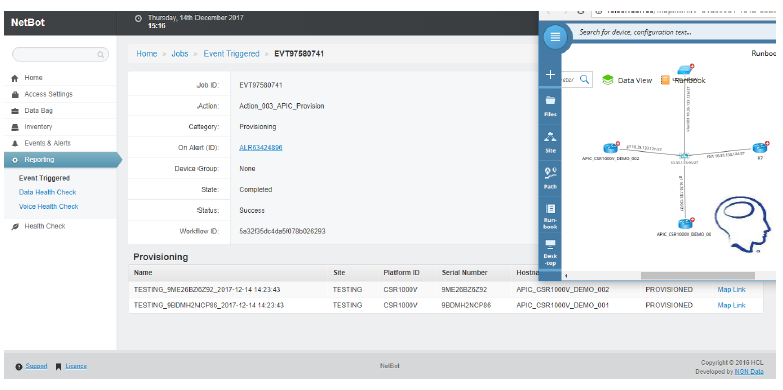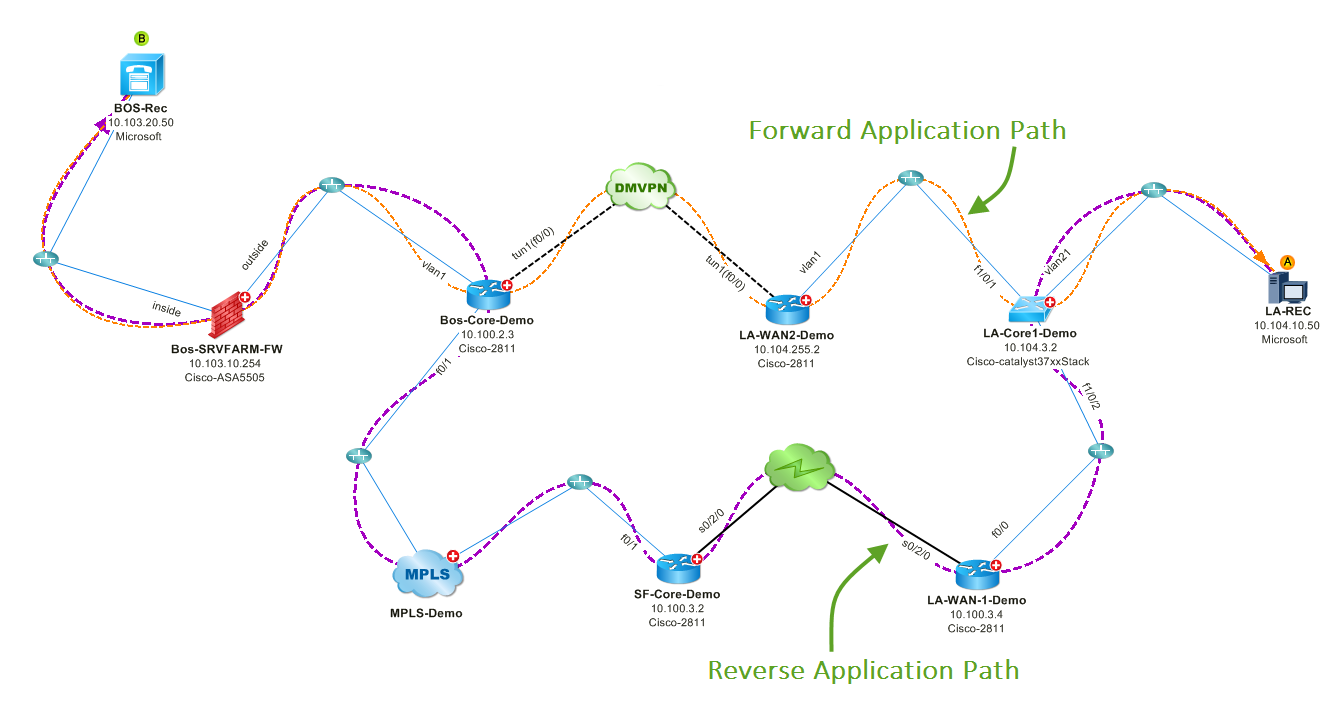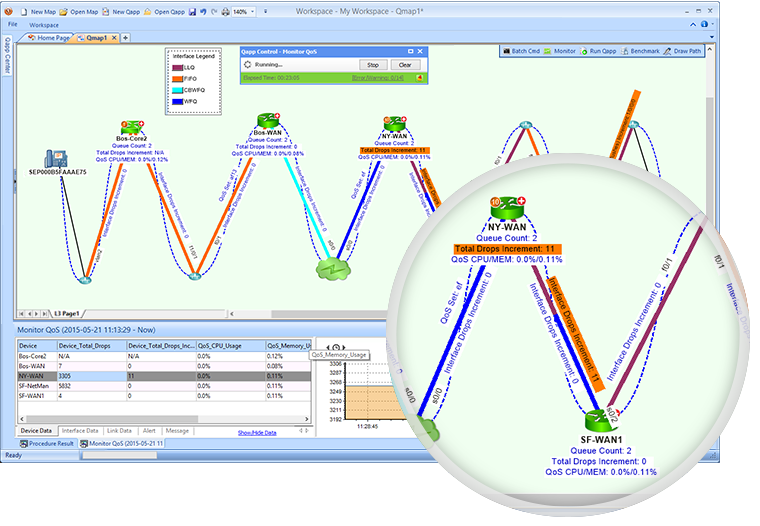 by Mark Harris Jun 4, 2018
by Mark Harris Jun 4, 2018
The network automation market continues to grow rapidly. Whether IT’s investing in mega-trends like cloud computing and intent-based networking, or finding ways to drive greater efficiency within the NOC, enterprise networks — and culture and processes behind them — are going through seminal change.
If you think about it, automation is what happened to the data center world more than 10 years ago. Those were the hyper-growth days of virtualization and orchestration and emergence of market leaders like VMware ESX and Microsoft Hyper-V. The same thing is happening to the network today. For enterprise networks — often a growing yet brittle array of legacy MPLS combined with early software-defined networking investments — they are also at the beginning of an exciting automation journey.
According to Gartner, by 2021, productized network automation tools will be used by 45% of enterprises, an increase of fewer than 10% today. This is largely driven by infrastructure and operations leaders who need to deliver greater agility to the business.
NetBrain and HCL’s NetBOT integrate together into unified workflow for multiple use cases: (1) automated device provisioning and topology mapping, (2) asymmetric route auto-remediation, (3) automated performance health checks and metrics threshold corrections.
For teams managing networks day-to-day — the architects, the NOC technicians, the network security engineers — their needs are equally acute. The network must be available and secure 24×7. But they’re often living in a world dominated by the command-line interface (CLI) or where having the right information at the right time can be challenging. Unfortunately, that can put the network teams at a tremendous disadvantage, as revealed in our recent State of the Network Engineer survey report.
That’s why at NetBrain, we’re excited to share how we’re working with one of our customers, HCL Technologies, to power enhanced network automation. As a leading global IT services company, HCL helps global enterprises re–imagine and transform their businesses through digital technology. HCL employs roughly 120,000 employees in 32 countries and has consolidated revenues of close to $8 billion. They offer industry-leading Next-Gen Network Services (nGEN) with an integrated portfolio of solutions — SDN, SDNWAN, IoT, Cloud, Automation, Cybersecurity, Analytics, and collaboration.
Our partnership combines the capabilities of NetBrain’s visibility and automation platform with HCL’s NetBOT platform to bring together a new level of agility and speed to network workflow management.
NetBrain, delivering network visibility and automation
Today, our technology enables network engineers to visualize their hybrid networks end-to-end while automating tasks across workflows like troubleshooting, security, and change management. Through dynamic network mapping, engineers can quickly visualize every aspect of the network — contextualized to the task at hand — with layers of rich data, including configuration, performance, design, and more. With runbook automation, engineers can codify best practices and automate CLI-driven tasks (e.g., data collection, diagnosis, and analysis) within these workflows for maximum efficiency.
Through our open API framework, NetBrain can integrate with third-party solutions like ServiceNow and Splunk. This enables those toolsets, and the workflows they support, to trigger just-in-time visibility and automation. The result? Enhanced IT workflows. This is what makes our partnership with HCL exciting. Cue NetBOT.
NetBOT, making networks proactive and self-aware
NetBOT is network automation solution from HCL. Built on an open source orchestration platform, NetBOT uses built-in libraries of actionable workflows to automate the complete operational lifecycle of network devices. NetBOT’s advanced features include built-in capabilities for automated provisioning, predictive performance, incident auto-remediation, self-awareness, cognitive learning and AI-enabled collaboration. Jointly, these help to pave a roadmap for enterprises toward real-time, proactive, and self-healing networks.
Through open APIs, NetBOT integrates with a multitude of tools and platforms, including ITSM, element monitoring, analytics, and Cisco DNA-C. This is where NetBrain comes into the picture.

How NetBrain and HCL are working together
For network engineers, the NetBrain-NetBOT team-up means a higher level of automation capabilities that saves time, lowers risk, and ensures optimal network health and uptime. Here are three examples of how NetBOT is leveraging NetBrain for its customers.
Automated network device provisioning and topology mapping
Through open APIs, HCL has created an easy-to-automate network ecosystem, where NetBOT can integrate with NetBrain, Cisco DNA-C, and ITSM tools like ServiceNow. Take the example of provisioning a new device in a branch, where having a clear, real-time view of branch changes is critical. In our aforementioned survey, 61% of network engineers said up to half their network documentation is out of date. Is there a better way? With NetBrain-NetBOT, device provisioning and topology mapping are now all integrated — into a single, unified workflow.
The open APIs enable NetBOT to fetch device details from an ITSM like ServiceNow, and automatically executes workflows to provision those devices through Cisco DNA-C. Once the device is provisioned, it triggers NetBrain to automatically generate a real-time network map from the hub to the last mile. This provides instant visibility into network topology, design, and performance — all without having to document network updates manually. Once complete, NetBOT auto-closes the change request opened for device provisioning and topology mapping.
 Integration between NetBOT and NetBrain provides a unified workflow for device provisioning and subsequent topology mapping.
Integration between NetBOT and NetBrain provides a unified workflow for device provisioning and subsequent topology mapping.
Asymmetric route auto-remediation
When troubleshooting network issues, engineers need to know how traffic flows across the live network. The point is that the path is specific — because troubleshooting is specific and contextual — but when it comes to gaining that visibility, manual path-tracing can often slow down engineers. For instance, 43% of network engineers said that network diagrams are neither updated nor customized when it comes to network troubleshooting. Better visibility is needed before troubleshooting can begin.
One of NetBrain’s strengths is the ability to dynamically visualize and monitor traffic. With NetBrain, you can simply enter the source and destination IP address to visualize how application traffic is flowing between points A and B. To determine whether that application is experiencing asymmetric routing (which could be an issue), NetBrain can just as easily map the reverse path to see how traffic flows back from B to A. If a problem is identified, NetBrain issues an alert which acts as an input for NetBOT. NetBOT can then access devices of the asymmetric path and run the appropriate remediation commands. The bottom-line: an enhanced nested workflow with better visibility, all automated.
 NetBrain’s A-B calculator provides key visibility into application traffic flow, the basis for better troubleshooting and remediation.
NetBrain’s A-B calculator provides key visibility into application traffic flow, the basis for better troubleshooting and remediation.
Health check performance and automated metric threshold correction
Finally, take the example of troubleshooting a slow application. Today, executing CLI commands device-by-device can be time-consuming and laborious, and when it comes to reducing mean time to repair (MTTR), every second counts. From our survey, 43% of network engineers said that troubleshooting today simply takes too much time through the CLI.
That’s where automation comes in. NetBrain contains a vast library of predefined apps (you can also build them yourself and even nest them together to daisy-chain automation) that automate CLI execution. With NetBrain, you can run apps to identify root causes like network congestion, excessive link delays, or other bandwidth issues, thereby saving tremendous amounts of time through manual diagnosis. Based on NetBrain’s diagnoses, NetBOT can then ingest NetBrain’s data and trigger a set of targeted steps to reset bandwidth, latency metrics, etc., thereby enhancing the overall troubleshooting workflow. Net-net, through automated diagnoses and subsequent remediation, this helps to maintain device availability, network health, and link performance.
 NetBrain allows you to automate CLI commands so you can more quickly understand network health.
NetBrain allows you to automate CLI commands so you can more quickly understand network health.
At NetBrain, we’re always excited and eager to learn how our customers are using our platform today. In the case of HCL, they’re finding innovative ways to dramatically enhance their existing provisioning and troubleshooting workflows with visibility and automation. According to HCL, their customers have experienced great agility and speed through the deployment of these nested workflows, and we’re looking forward to even deeper partnership innovation.
If you’re attending Cisco Live, be sure to stop by the NetBrain booth (#1951) where HCL will be highlighting how NetBrain and NetBOT work together. Our team of automation experts will be available for questions from attendees. See you in Orlando!

 Integration between NetBOT and NetBrain provides a unified workflow for device provisioning and subsequent topology mapping.
Integration between NetBOT and NetBrain provides a unified workflow for device provisioning and subsequent topology mapping. NetBrain’s A-B calculator provides key visibility into application traffic flow, the basis for better troubleshooting and remediation.
NetBrain’s A-B calculator provides key visibility into application traffic flow, the basis for better troubleshooting and remediation. NetBrain allows you to automate CLI commands so you can more quickly understand network health.
NetBrain allows you to automate CLI commands so you can more quickly understand network health.